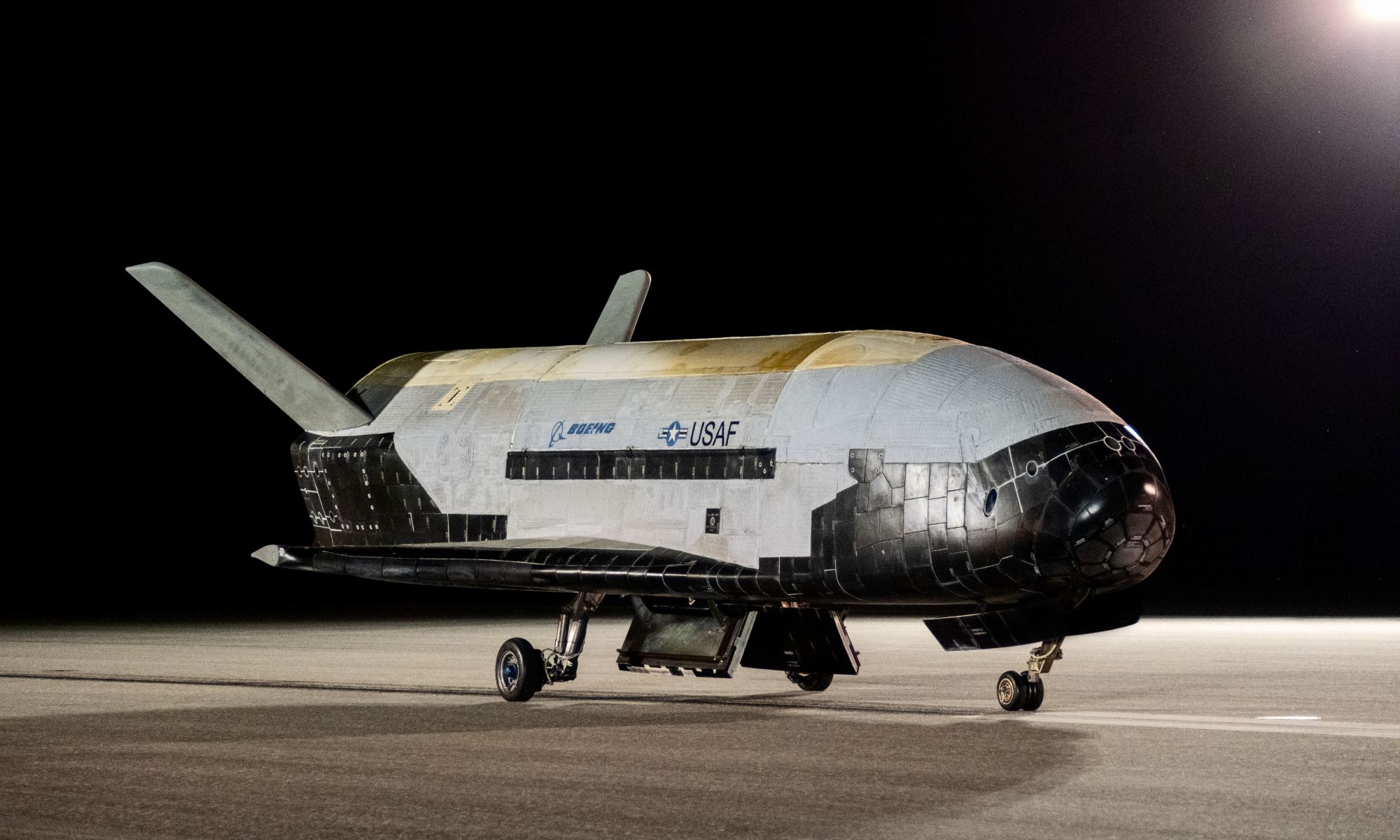At 5:22 AM Eastern Time on November 12, the Space Force’s (and Air Force’s) X-37B spaceplane landed back on Earth after two and a half years in orbit. The secretive spaceplane has now performed 6 missions, and the latest, OTV-6, was the longest flight yet. Details about the X-37B’s purpose are scarce, though it is clear that the vehicle is designed to serve as a testbed for advanced spaceflight capabilities. Here’s what we know about the latest mission.
The X-37B, which looks superficially like NASA’s retired space shuttle, but is uncrewed and much smaller – it fits inside the fairing of an Atlas V or Falcon 9 – stayed in orbit for a record-breaking 908 days. The latest mission boasted a significant upgrade over previous flights, as the plane carried a new service module attached to the rear of the spacecraft (The X-37B program actually boasts a fleet of two identical vehicles, each of which has now flown three missions. It’s unclear if the service module will be a permanent upgrade to the spaceplanes). The module expanded the spacecraft’s capacity for scientific experimentation, according to Joseph Fritschen, the Air Force Rapid Capabilities Office’s X-37B Program Director.
“The addition of the service module on OTV-6 allowed us to host more experiments than ever before,” he said.
In a press release on Friday, Space Force shared a new photo of the previously unseen service module, taken before launch in 2020. The module was ejected from the spacecraft before re-entry and is still in orbit, but Space Force was keen to emphasize that it will eventually be disposed of safely, in an effort to ensure the responsible prevention of unnecessary space junk.

Of the experiments on board OTV-6, two were NASA-led projects, and are therefore not classified. The first of these was a test designed to see how various materials react to conditions in space, while the second studied the effects of space radiation on seeds.
The Naval Research Laboratory included a mission on board as well, testing the conversion of solar power to microwave energy, and retransmitting that energy back to Earth.
In October 2021, the mission also released an Air Force satellite called FalconSat-8, which had five experiments on board: An electromagnetic propulsion system, an experimental low-weight antenna, a star tracker, a carbon nanotube radio frequency experiment, and a commercial reaction wheel for attitude control. FalconSat-8 is still in orbit.

Beyond these known experiments, there are few details available about OTV-6 or the program more broadly. The X-37B has the ability to perform orbital maneuvers, and has in the past released unspecified payloads into orbit. But as far as most observers can tell, it is largely an experimental testbed for new outer space capabilities. As Fritschen put it, “The X-37B continues to push the boundaries of experimentation, enabled by an elite government and industry team behind the scenes. The ability to conduct on-orbit experiments and bring them home safely for in-depth analysis on the ground has proven valuable for the Department of the Air Force and scientific community.”
The X-37B isn’t the only secret spaceplane in the game. China recently developed its own reusable spaceplane, which first launched in 2020 and is now on its second flight. Winged spacecraft of a less secretive nature are also beginning to see some commercial use. Virgin Galactic’s suborbital ‘VSS Unity’ spacecraft flew founder Richard Branson to space in 2021, and Sierra Nevada is developing a spaceplane called Dream Chaser, designed to carry cargo to and from the International Space Station as early as 2023.
As for what the X-37B will do next: well, there isn’t much forthcoming from Space Force. We’ll have to wait and see.
Space Force Press Release: “X-37B orbital test vehicle concludes sixth successful mission.”
Featured Image Credit: Staff Sgt. Adam Shanks, Space Force.

